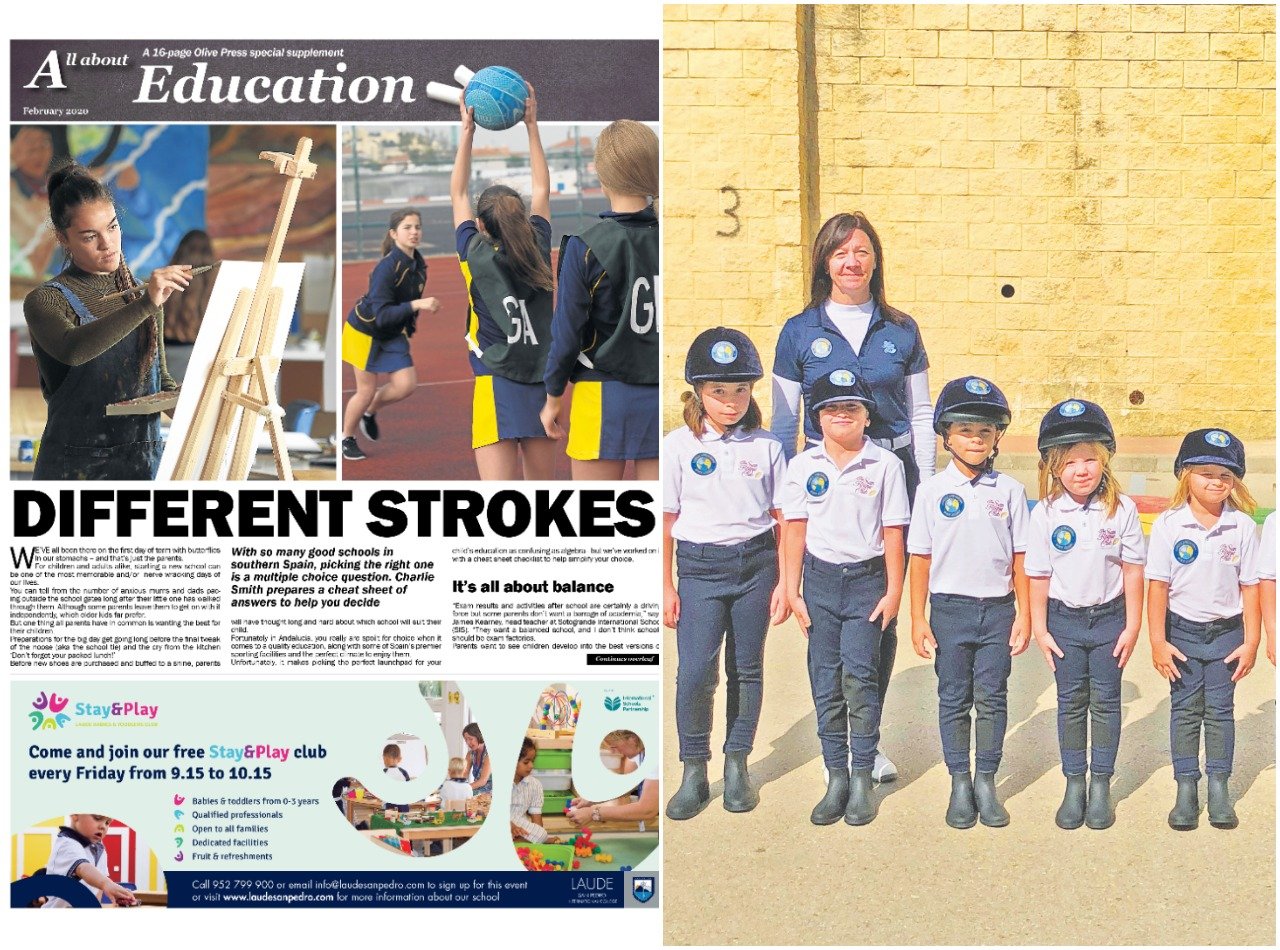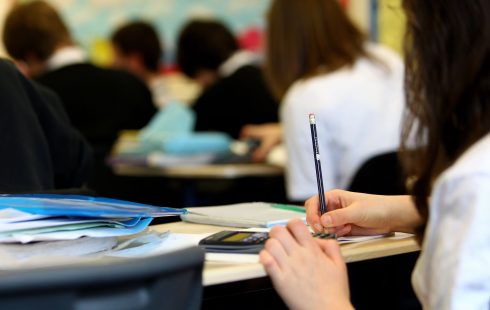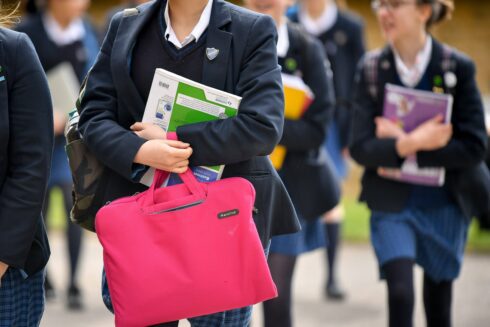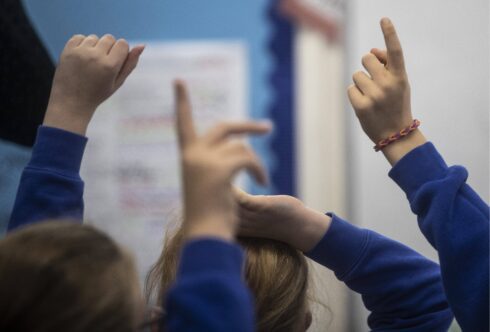WE’VE all been there on the first day of term with butterflies in our stomachs – and that’s just the parents.
For children and adults alike, starting a new school can be one of the most memorable and/or nerve wracking days of our lives.
You can tell from the number of anxious mums and dads pacing outside the school gates long after their little one has walked through them. Although some parents leave them to get on with it independently, which older kids far prefer.
But one thing all parents have in common is wanting the best for their children.
Preparations for the big day get going long before the final tweak of the noose (aka the school tie) and the cry from the kitchen ‘Don’t forget your packed lunch!’
Before new shoes are purchased and buffed to a shine, parents will have thought long and hard about which school will suit their child.

Fortunately in Andalucia, you really are spoilt for choice when it comes to a quality education, along with some of Spain’s premier sporting facilities and the perfect climate to enjoy them.
Unfortunately, it makes picking the perfect launchpad for your child’s education as confusing as algebra – but we’ve worked on it with a cheat sheet checklist to help simplify your choice.
It’s all about balance
“Exam results and activities after school are certainly a driving force but some parents don’t want a barrage of academia,” says James Kearney, head teacher at Sotogrande International School (SIS). “They want a balanced school, and I don’t think schools should be exam factories.
Parents want to see children develop into the best versions of themselves they can be.”
It’s worth considering as you mull over the first item on your checklist, headed Public or Private. Do you opt for an international college or a Spanish state school?
It’s generally an easier decision to make for younger children, as primary schools throughout Europe are more or less comparable.
READ MORE:
- Gibraltar’s Prior Park School goes from strength to strength with its exam results, continuing its 100% pass rate
- CLIC International House is inspiring the next generation of English teachers at its Malaga and Sevilla centres
- Andalucia’s Cameron International School offers students a global education and has just partnered with Tottenham Hotspur
Around two thirds of expats send their children to local state schools – called ‘colegios’ (primary schools) and ‘institutos’ (secondary schools).
There are two serious advantages to Spanish schools.
One – children will learn Spanish fast and should integrate well into their new home country.

Younger children, in general, thrive in state schools with the under nines normally picking up impressive spoken Spanish (usually, far better than their parents) within a year, just by socialising with their friends.
Two – state schooling is free of charge from the age of three, when children can begin attending ‘infantile’ or ‘pre-escolar’, equivalent to a nursery in the UK. The only costs you’ll have to cover are books, trips and, if the school has them, uniforms.
There are also plenty of downsides to Spanish schools. Older and less extrovert kids with limited Spanish can have trouble adjusting. Learning maths and physics in a foreign idiom isn’t for sissies!
- Read the Olive Press education supplement online for free HERE
Also throwing them into Spanish schools if they are over nine can be daunting in the extreme.
It is definitely worth considering extra language tuition outside school hours to help ease the transition.
Budget up to €20 per hour for private lessons – although there are plenty of excellent local academies offering Spanish and some town halls even give free classes.
Your child will not only be more able to keep up with lessons but is far more likely to make friends if they can socialise in the same language.
“It is fine if you get the kids into school early, at a young age, but if they are nine or 10 then they will find it harder,” advised one English parent whose two children have been through the local system in Manilva.
“They will almost certainly need some extra tuition and watching carefully. It also helps if the parents get involved in the school and try to get to know the other Spanish parents. Joining the parents/teachers association certainly helps.”
If you decide against the Spanish state system – either because you fear educational standards are low (according to reports, Andalucia does indeed come well below average), or because you prefer to have your children educated in English – then you will have no choice but to go private.
Top of their class
It’s likely you’ve already heard of some of the region’s more well-established private international schools.
Laude in San Pedro, which is part of the UK’s International Schools Partnership, is one. The grouping includes the British School of Malaga and the highly-respected Lady Elizabeth school in Javea, Alicante, as well as dozens more globally.

Laude has a roll call of nearly 1,000 pupils and has grown consistently over decades.
Sotogrande is another of the biggest and best-known schools, established in 1978 and now totalling around 1,000 students of over 50 nationalities.
The English International College (EIC) in Marbella also has a prestigious reputation based on results and its high teacher-to-pupil ratio (currently 66 teachers to 450 pupils).
Over 60% of its pupils get into Oxbridge and Russell Group universities each year and the school is regarded as the most academic on the coast.
EIC head teacher Ron Griffin said: “We follow a British curriculum and get our pupils into the top British universities, apart from those who want to go elsewhere.
“With so many teachers we can guarantee that pupils get the education they deserve.”
What they offer?
Most international schools follow a UK curriculum of GCSE and A-levels but many also offer the International Baccalaureate (IB) programme as well as the local secondary school qualification, the Bachillerato.
The IB – which may be unknown to some English readers – is the normal route to university for European students.
The main difference is that IB students take six or seven subjects – which often include elements of community work and public-speaking – as opposed to just three or four at A-level.
Counting the cost
International schools are widely considered the best learning environments, although the most obvious downside is the cost.
Schools range from basic to luxurious but they all come at a price.
Fees range from €3,000 a year for primary school to between €6,000 and an eye watering €17,000 per year for secondary schools.
And that generally doesn’t include the cost of books, school trips or uniforms.
A further downside is that children may find themselves in something of a language vacuum, unable to integrate with the local community outside the English-speaking classroom.
But international schools are beginning to fight this effect, with many more Spanish extracurricular activities available, more access to local culture on school trips and after-hours classes such as flamenco dancing.
Wrapping it up
When it comes to education, there is no ‘one size fits all’ approach, and what school you choose for your children will depend on their individual needs.
Just one final tip for parents who decide to go with the Spanish system: learn the language yourself. How else will you chat to your kids’ teachers at open days?
And, more important for your kids than that, how will you help them with their homework?









